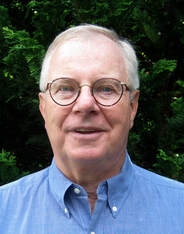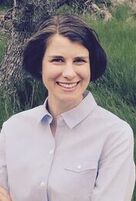 Peter Gow Peter Gow It’s been an appalling few weeks and an appalling year. The sickening “Varsity Blues” scandal bookends the forced separation of families at the U. S. border and the continuing, tragic fallout from Sandy Hook and Parkland. More hyper-selective colleges than ever admitted fewer than 10% of their applicants this year, functionally turning “offices of undergraduate admission” into offices of rejection, despite all the warmth and reassurances that school-based college counselors and Frank Bruni can give applicants. And every single school I hear from has students out of school on stress-related medical leave. You’re likely reading this as an educator, and your heart is aching along with mine, I know. Figuratively or for real, the little “Ally” sticker on your door is there for every kid, regardless of demographic particulars. This I believe. But what is your school or organization doing to be an ally? What institutional steps has your board, administration, and faculty collectively taken to actively support not only its own students but all children in the struggle for a secure, healthy, and equitable future? We’ve seen the “Parkland Kids” and a mobilized generation stand up and fight for rational gun laws, but too often the public response has been to admire the students’ courage and maturity rather than actually to engage with their life-and-death issue. What could schools as institutions do to further this cause, which belongs not just to the survivors but to all of us? Last month around the world students walked out of class to raise awareness of global climate change. Is removing disciplinary consequences from such principled and urgent acts the best we can do to support these students on this apocalyptic issue? The kids, in so many ways, are trying to teach ALL OF US lessons that their schools should be taking up as far more pressing than just checking boxes on college applications. The National Association of Independent Schools persists in advising schools against having students serve as trustees (see HERE), stating that “their general maturity can make it difficult for them to move beyond their particular experiences as current students.” Does anyone who works with high-schoolers or who watched the student-organized pro-gun control rallies across the country last year believe that kids are categorically beyond being responsible board members? I, for one, think the NAIS position is shameful, and I applaud schools that give students a voice in governance. Every educator knows that the college admission system is broken, and we know that much of the blame rests with a self-serving and amorphous industry in which testing giants, rankings publications, and test-prep and application support counselors make billions off the anxiety of parents and students. Some schools have found ways to band together to reject and repudiate the injustices and to propose alternatives—the Independent Curriculum Group and the Mastery Transcript Consortium are two, and groups like Challenge Success, the Education Conservancy, and Making Caring Common are a few more—but most schools do not seem to prioritize this work. Perhaps they fear that grade-less transcripts or too much “caring” will weaken their brands and their appeal to prospective families, but doesn’t inaction amount to complicity in a system based on winners and losers that harms kids—and turns some parents into grotesque headliners in the Varsity Blues affair? We also have an equity issue in our K–12 education system as a whole, with uneven funding and self-enforced separation among the professional cohorts of public, public charter, general private, and independent school educators. We all of us, no matter where we teach or work, care about the success of all kids. Why, then, can’t we unite in a common effort not only to bring equity to the system but also to converse and teach and learn from one another as educators? Individuals can cross sector boundaries by going to conferences and EdCamps, but what initiatives can SCHOOLS undertake to build inter-sector bridges in a shared commitment to a better future for every child? Thank you for being, through your interest in something like the Independent Curriculum Group, an ally of students in the work of creating better learning experiences for them. Now, perhaps, it’s time for all of us to exhort our schools and communities to get together, stand up, and apply the collective power of our institutions to doing the things that every news cycle reminds us must be done to save our children, our planet—and our schools. It’s time for individual allies to mobilize our schools to speak with our students. We know, as the kids do, what needs to be said. Let’s start saying it together.
0 Comments
 Corinne Dedini Corinne Dedini School desperately needs a design revolution. Since Grant Wiggins and Jay McTighe published Understanding by Design in 1998, we’ve been on the slow boat to backward design. (Even though the term was coined in 1949 by Ralph Tyler, classroom teachers have only really been thinking about it for two decades). The problem is that most teachers believe they are designing backwards already. But designing for what teachers think should be taught yields very different outcomes from designing for what we want learners to learn. So why do schools still build march-through-the-content syllabi when what you design backwards from is as important as the process itself? At One Schoolhouse, our teachers do not start their course design process by creating the course syllabus. The first thing they do is create a course map, where they develop three to five competencies that students will master. A competency is an aptitude (or collection of skills) that captures our values and is measurable. The next step in course mapping is to determine the skills to be scaffolded and the evidence that will show measurable progress towards mastery. Our teachers also design assessments that result in the creation of authentic artifacts of mastery and determine pathways students may take in each learning cycle. One of the last things that they do is backfill with the content needed to master the course competencies. Does the subject-specific content still get learned? Absolutely, but it isn’t the design-driver because amassing knowledge is not a competency in most of our classes. Let’s take a moment to address those courses where the lower level Bloom’s skills -- “to know” or “to understand” -- do show up in one of the competencies, and explain that we are secure with the belief that knowledge is absolutely essential at some point in every course. When committing facts to memory needs to be elevated (in Art History, for example), the teacher uses project-based learning techniques so that the knowledge attainment is a necessary component of the process. When knowing specific content needs to be a measurable outcome (in classes culminating in an AP test, for example), then the skill of standardized testing may show up as a piece of a competency. As a supplemental online program, most students are attracted to our courses for the subject-specific knowledge they hope to attain. Our goal is to leverage that curiosity into enduring ways of thinking and doing -- rather than transitory exposure -- so that we can send students off with a lifelong skill. This is the essence of designing backwards from competencies: turn passion into permanence by designing backwards from that which abides.  Brad Rathgeber Brad Rathgeber Connection, collaboration, creativity, and application were the original pillars that we built from, though as the field (and technology evolved) and as we learned more in the online space, that baseline pedagogy was added to and evolved. Our challenge was to understand how to measure progress and growth that supported the pedagogy we had set out. Interestingly, we started with the understanding that these things should be measured… and that’s not always where we come from in the independent school world. As we designed backwards from the goals, we had to determine both what we wanted to measure and which tools were best for the job. Student voice was key for us. We wanted to know how students perceived what was being built--not only at the end of the course but also at key moments throughout the academic year. So, since our start, we’ve surveyed our students five times a year: two weeks into the course, and at the end of each quarter. Teachers receive this feedback, and they review it with the Assistant Head and our Instructional Designer, in order to make any in-moment course corrections and to plan for future iterations of the course. Similarly, faculty are evaluated by themselves and by the Assistant Head of School, in order to make sure that objectives are met. Faculty evaluations, in aggregate, are even shown to the Board, as a marker of course progress and to demonstrate how and why investments are being made in certain areas. We also continue to improve and adjust our pedagogy, using the latest available research and learnings of our faculty and administrative team. We keep the pedagogy of the school updated, and adjust our faculty course standards and competencies annually — we continue to move the goalposts so that what was “exemplary implementation” in year one, is “baseline effectiveness” by year three. We deliberately built from mission and goals, and then measured. For schools, there might be an opportunity either with reverse design or with building instruments to measure how you are meeting the stated goals and objectives. For a deeper dive into the topic, check out the below research and resources:
White-Papers & Blogs:
|
Don't miss our weekly blog posts by joining our newsletter mailing list below:AuthorsBrad Rathgeber (he/him/his) Archives
April 2024
Categories |

 RSS Feed
RSS Feed